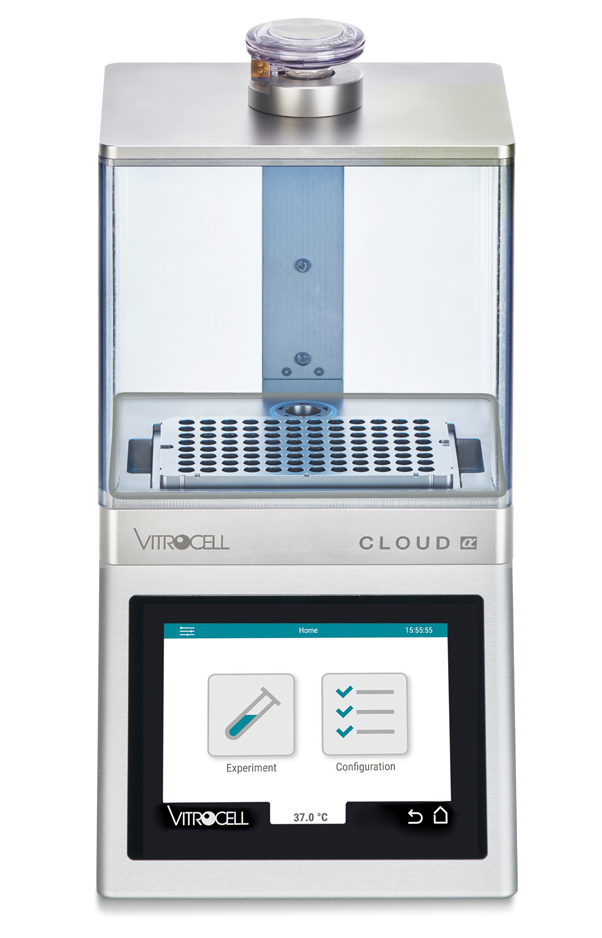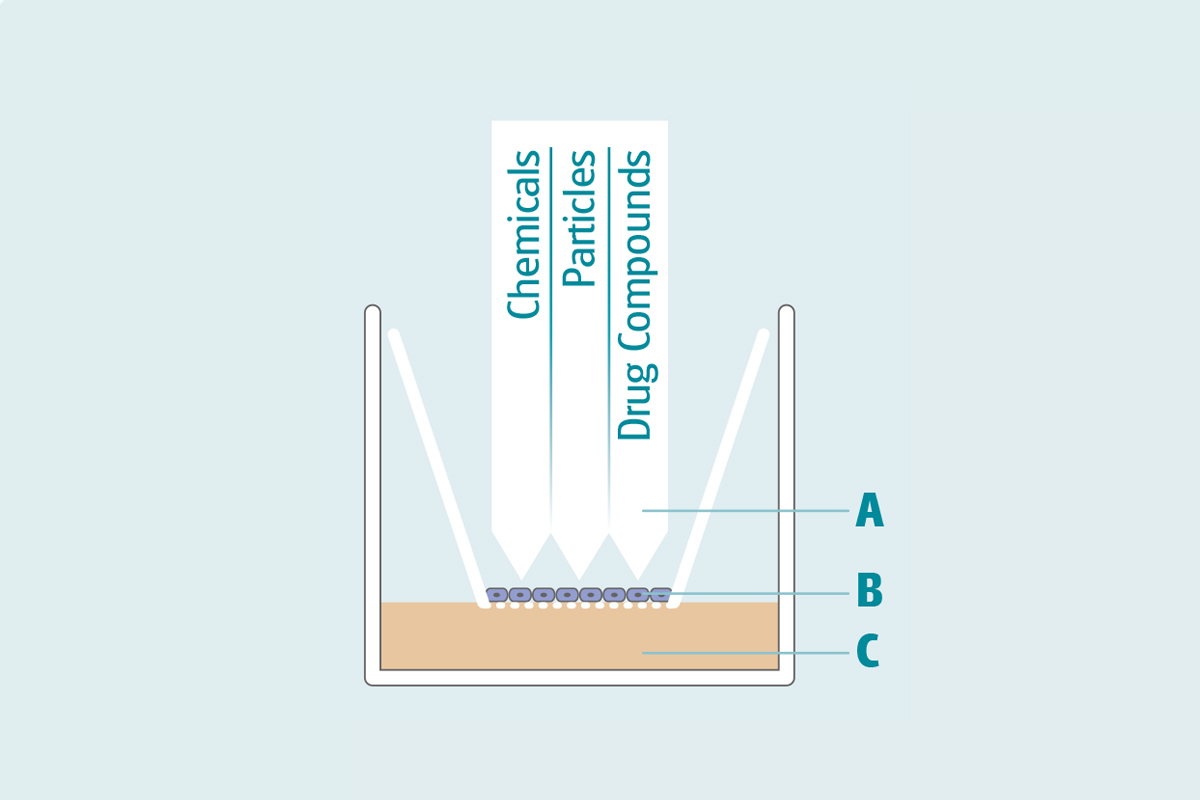Interchangeable base modules for 24- and 96-well HTS plates

Interchangeable base modules for 24- and 96-well HTS plates
The latest innovation of the VITROCELL® Cloud Alpha can now be equipped with 24-well and 96-well HTS plates. With its modular design, this advanced platform is tailored for higher throughput demands and enables a rapid and efficient execution of experimental series. Everyday experiments at the Air/Liquid Interface (ALI) have never been easier.
Developed on the foundation of the renowned VITROCELL® Cloud formats, this member of the Cloud Alpha Family represents a major step forward in experimental flexibility, enabling users to expose either 24- or 96-positions with minimal test substance investment.
Potential applications range from testing chemicals, nanoparticles, viruses, bacteria, as well as coating plastic inserts, transfecting cell populations in HTS formats, and preconditioning cells with the desired test substance.
The sQCM 12 sensor seamlessly integrates into the Cloud Alpha Plate exposure module. It offers precision measurement of deposited mass, down to nanograms/cm2.
All results are logged within the VITROCELL® Monitor software., where they are presented graphically and can be effortlessly exported as .csv files for for further analysis.
VITROCELL® offers a selection of three types of vibrating mesh nebulizers, each with specific droplet MMAD ranges: 2.5–6.0 µm, 2.5–4.0 µm, and 4.0–6.0 µm. An advanced version is also available with a range of 9.0–12.0 µm. This versatility makes it particularly suitable for testing whenever limited quantities of testing materials are available.
The fully modular design of VITROCELL® Cloud Alpha Plate Version allows for the rapid and efficient execution of experimental series. Users benefit from the removable, easy to clean base modules. These precisely manufactured, stainless-steel parts allow for aerosol deposition without significant influence from electrostatic effects and are compatible with all commercially available HTS Transwell geometries.

The VITROCELL® Cloud Alpha Plate platform has continued to evolve and is now available with the new Exposure Top Four/24. With its modular design, the system is tailored to higher throughput demands and enables rapid, efficient execution of experimental series.
In addition to established applications such as testing chemicals, nanoparticles, viruses, bacteria, coating plastic inserts, transfecting cell populations in HTS formats, and preconditioning cells, the Cloud Alpha Plate platform can now also be used for drug screening approaches.
With the Exposure Top Four/24, researchers can aerosolize up to six different compounds or six different doses of a single substance simultaneously on four 24-well inserts. This capability accelerates the identification of promising drug candidates, which can then be seamlessly upscaled on the Cloud Alpha Plate system with integrated dosimetry via QCM.
This advancement represents an important step toward streamlining exposure workflows and increasing experimental throughput at the Air/Liquid Interface (ALI).The Exposure Top Four/24 enables efficient dose-response studies by exposing cells to six different doses simultaneously.
The Exposure Top Four/24 stream-lines drug candidate screening exposing six different substances simultaneously.
The modular design of the Exposure Top Four/24 allows for easy cleaning and sterilization of all components that come into contact with cells, culture media, or the aerosol.
In response to the scientific need to expose in physiologically relevant conditions, the VITROCELL® Cloud Alpha exposure devices have been specifically designed to enable direct exposure of mammalian cells or tissue at the Air/Liquid Interface. Here the cell cultures are not covered with media as opposed to submerged conditions which cause an undesired interaction of the formerly airborne substances with the culture media.
Cell systems cultivated on membrane inserts are exposed at the Air/Liquid Interface (ALI) so that the test substances are received directly. This approach allows for more credible and authentic results than by submerged exposure due to a closer replication of the human physiology.

A: Direct and controlled exposure of test atmosphere to cells
B: Cells on membrane
C: Media below cells
We are here to help.
Don't hesitate to contact us on your questions regarding our products and services!